Hebden Bridge Web
The UK’s first
Community Website
Slicing through the Valley
Matt Hilton's memory of
Hebden Bridge in the early 1980s
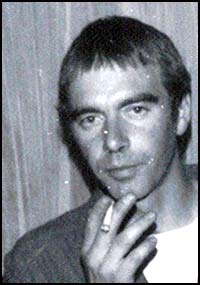 Hebden Bridge was my home between 1980 and 1985.
Hebden Bridge was my home between 1980 and 1985.
The place had become something of a way station of the peculiar. In no other small declining Yorkshire textile town could you run into P. J. Proby, Bernard Ingham, Ken Campbell or Ted Hughes on the street. I passed the best and the worst of times there.
A Londoner (Notting Hill) I had come to the Valley from the other end, from Burnley where I worked with Welfare State Theatre. I met my wife to be, Lesley Johns, there - she worked for Granada.
We moved into her cottage on White Lee Terrace Mytholmroyd in 1976 and I joined the retained Fire Service and got to know Ron Clark who worked at Walkley's clogs.
I also got to know Gordon Hoyles through drinking in the Shoulder of Mutton. We were building a gas bottle stand for the Arvon Foundation when the police picked him up on suspicion of being the Ripper. What pleased him was they said "they might have to dig up his garden".
By the time our first daughter was two we were looking for that bit of land and a house thing, which we found at Shroggs near Wood Top. Lesley met Elaine Connell and Sarah Farhad around then. Along the lane were Reg and ?? Singh a musical couple and swift, darting Mick Layton the electrician with a silently beautiful wife and a lively son. Further up onto the tops was the farmer who sold us half an acre shortly before he lost his life on the M1. I spent a winter with the widow sledging fodder to sheep in the snow.
In 1979 there was a nationwide Fire Service strike. During this there was a fire at Peter Inch and Annie Fatet's place and two of their friends died. I was interviewed by Special Branch because they were curious that a fireman should know "those sort of people."
It was a privilege to watch the changes at Hebden. In the ecology of tourism that arose, there were those of us who formed the compost. Broken lives clunched under the graphs of business plans. A swirl of human litter in the steeply tiered streets with under and over houses. Incomers: battered fag packets and little girl's sweet wrappers dancing in the wind of Hebden's whirling distractions.
I got kicked out of the marriage in 1980 and like water found my way down the hill into Hebden. By that time I'd palled up with Arthur Callard and got to know the Albert Street crew. Arthur gave me house room post-divorce and I got to know Bruce Holdsworth who opened a gallery on Market Street.
Matt Hilton sent the following photos from the gallery opening night, photos which were taken by his friend, Claire McNamee.
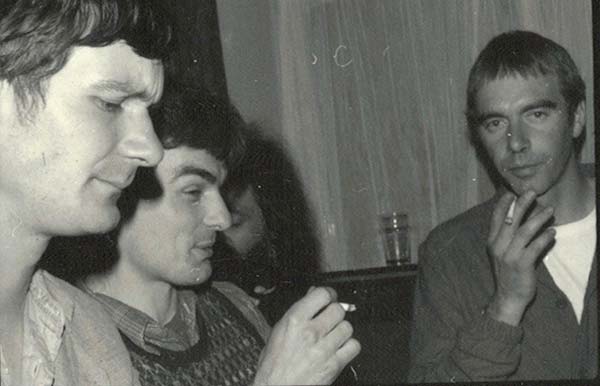
Martin Parr, Peter Fraser, Matthew Hilton
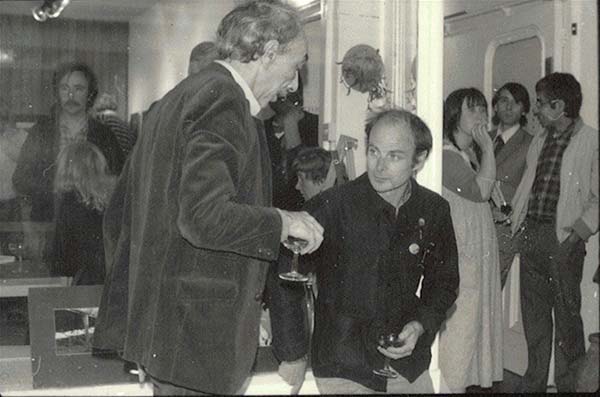
Asa Benveniste, Brodnax Moore, Farhad's brother

Kath Beetham
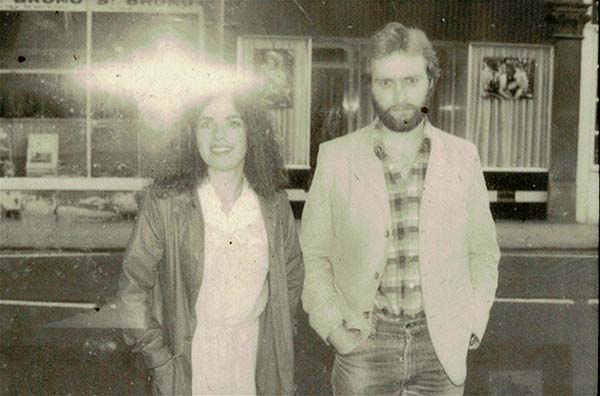
The Rileys
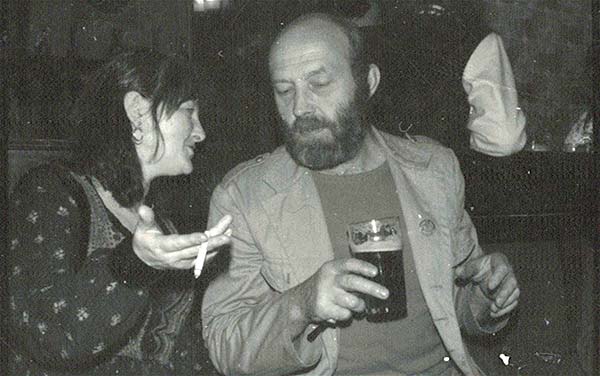
Claudine and someone from Heptonstall
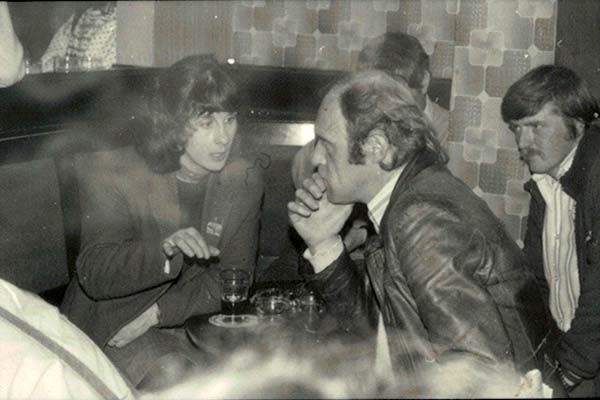
Wish I'd known them
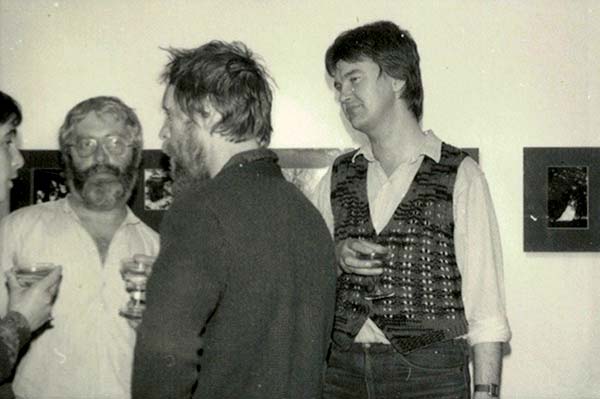
Paul? (social worker)
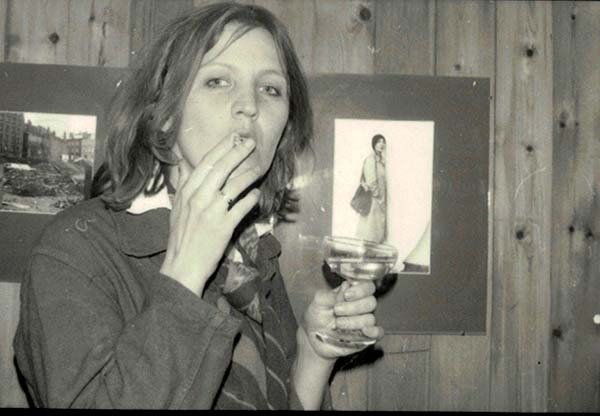
Agneta Falk
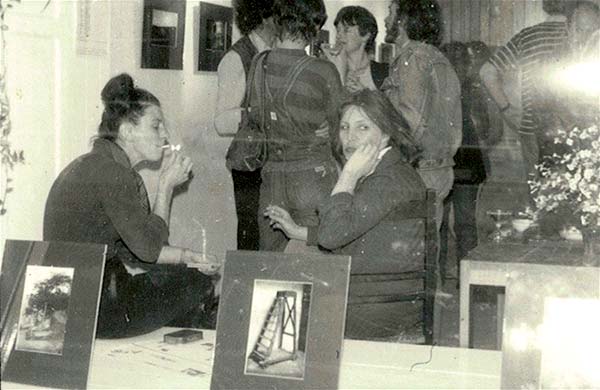
Barbara Hebditch
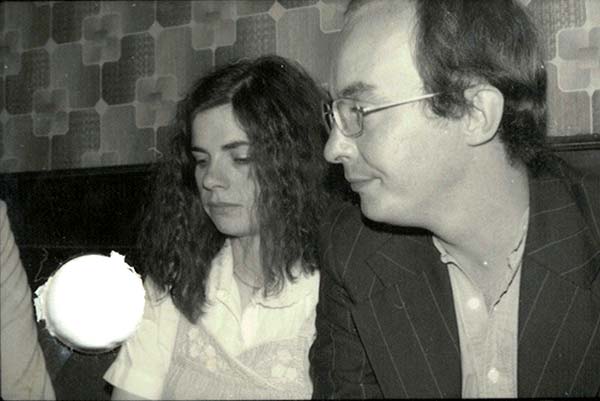
?? & Arthur Callard
From Arthur's attic I bought the smallest house in the world at the end of a cul de sac behind Aurora Foods and began to do lino-cuts.
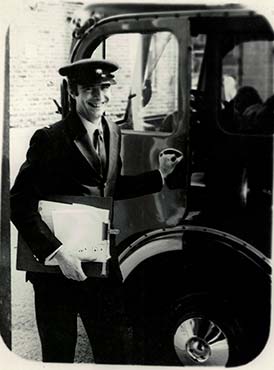
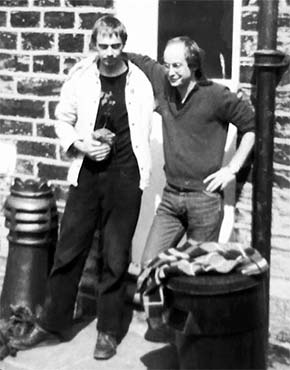
From Back Market Street I moved up to Unity Street and plunged into local affairs, running for the Green Party under the wary eyes of Guss and Tessa Smith and co-initiating the Hebden Bridge Festival with avowed democratic centralist Brodnax Moore. I became a regular (as far as my shifts at Halifax then Todmorden fire stations allowed) at the Albert pub, looking at life through the bottom of a glass, getting to know the shaky hydraulics of the drinking arm - and outlasting three landlords.
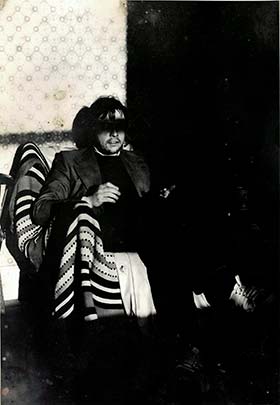
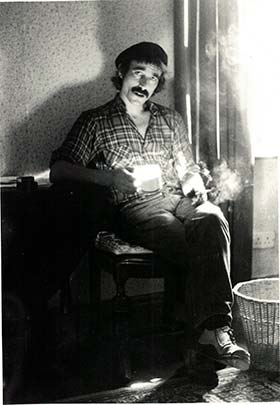
Philosophising at Unity Street between opening hours, Pete Miles left and Jem Thomas
One day, perhaps 1983, into town came Marsh. A picture restorer from South Kensington with, for a while, a coin or two to spin to those who'd peck at any new arrival. In his clubman spiv's outfit, the little hat, the hopeful suedes, his restoring guild skills, his faffing with hog's hair, his airy talk of London bus stops - natives hearing us would see a pair, the yakking drawl and soft mouthed spitty grins.
The element of the cashiered was in us both. By then I lived on Edward Street running straight and level, ending in a wood.
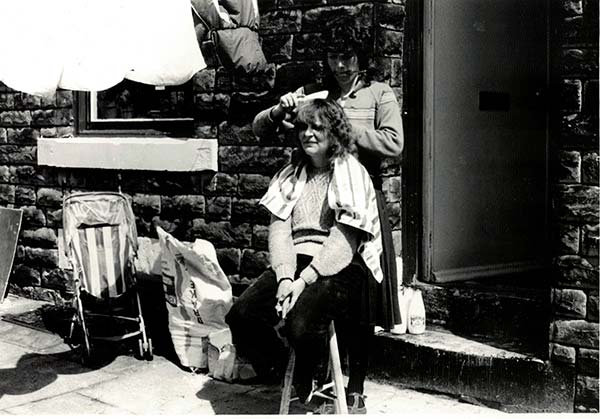
Either Edward Street or Unity Street
Children play, women cut each other's hair when it is fine, men mend cars, I go slowly mad. My house (sold me by Martin Parr) had an underdwelling on Eiffel Street. It was too big for me since my lover, potter Diane Walkey, had lost patience and run off with a smoothie with a leg in plaster from Heptonstall.
In a spirit of adventure I offered Marsh the back bedroom. Marsh cracked his knuckles and grinned red-faced. Mostly he kept to his room. Winter came. We lost the electric. He would sometimes leave a little packet of fruit in the kitchen for me. I had lost interest in him by then. My time was mostly spent planning. Then he fell ill. He complained of the cold, he wouldn't come out of his room, except for irregular shopping. I was experimenting with him - would he die? I suggested I'd have him stuffed and show him to tourists. A sports car he owned and my attempts to con him out of it float up in memory. The only vehicle I had at Edward Street was a cranky Commer campervan that George Guest gave me.
For the memorialist diaries are one thing, post-office books are another - neat blue booklets with waterproof plastic covers. With a post office book you avoid the emotional sweat of asking for overdrafts - there were none. They were cleaner transactions. The neat thing for memorialists is that on the first page at the top is listed where and when the book was issued or renewed and each time you paid money in or drew it out they stamped the book with date and place so that they become travel documents.
My series runs from October 1984 when I opened the book with a deposit of one hundred and sixty pounds. The following day I drew out fifty and the day after that fifty in Manchester. Then I went back to Hebden Bridge and drew out another twenty. On the 22nd I drew out twenty pounds at Todmorden, no doubt after a night shift. On the 24th I was back in Manchester again and then there are no entries for six days although I'd only drawn out fifteen pounds. Perhaps I was receiving hospitality. It is possible that I was in Manchester to visit my daughters. In my dark blue leatherette Fire Brigade Union diary for that year their black and white photos are tucked in, hopeful faces.
Untucking, unfolding again: a National Express counterfoil for a coach journey between Cheltenham and Swindon on 26th May, a copy of a typed letter by me asking a builder to finish his work waterproofing at Edward Street, a building society receipt for the valuation fee for the same house, a membership card for National Union of Labour and Socialist Club and a card headed please give us a call from Scottish Finance (money lenders).
By October 30th I have run through the money in the book. November 5th I deposit one hundred and eighty, taking out twenty the next day. On the 8th I take out fifty pounds at what looks like Leicester, fifty the next day at Oxford and sixty the day after from the same post office. I am in Oxford spending freely. Why? I was visiting provincial playhouses with the idea that thru their foyers passed people of culture who might buy my linocuts. At one time I marked all towns having an American Express and a Cathedral (my executory ideas were always more fantastic than my artworks).
On November 12th, Mick Blowers starts to paint the staircase walls at Edward Street a warm grey, I am having central heating put in, the Gas Board visits. There are no more withdrawals until December 12th, nearly a month. There is nothing in the diary other than the regular cross marks of my tours of duty, two days, two nights.
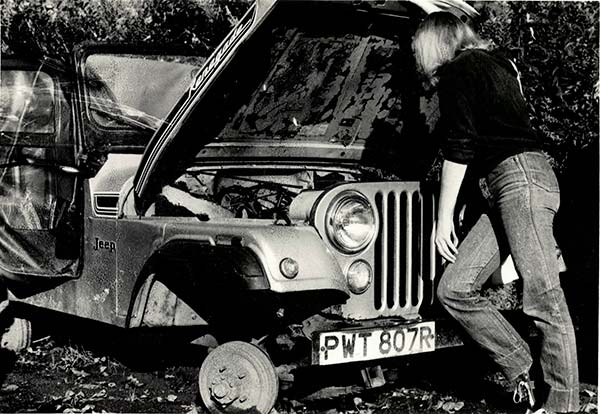
Diane Walkey thinks about it
Chaotic, post-divorce life in Hebden Bridge came to an end with a bang. Within a week of the Summit Tunnel fire in December 1984 (although my Station Officer urged me to book sick on the grounds of mental dilapidation) I handed in my notice. I thought I had been so quick but diary tells me that I gave notice on February 19th. I judged I was no longer fit to have other's lives in my charge. December pages show me looking north, listing Scottish addresses including poet Alan Jackson and Pete Miles, Hebden Bridge people hiding near Perth in order to meditate gnostically.
On January 8th I note that carpenter John Hooley, a great, shambling Northern Irish drunk, has begun to fit the oak slab kitchen work top he'd towed down the canal from Charlestown.
In a Hebden Bridgean flourish I walk out on Shirley Fawthrop at half past four on a February morning and hitch-hike to Birmingham where I draw out one hundred pounds and go on to Worcester. By the time I got back to Hebden Bridge, having seen the world, I was ready to resign and did so. I left in a hired Datsun Bluebird automatic with my studio kit, a suitcase of souvenirs, a sack of potatoes, a spade and a portable gas fire which could be turned on its back to cook on.
The name Li Yuan-Chia came to mind: in 1982 he'd shown Albert Street Workshop painter Ray Elliott at his gallery at Banks in Cumbria on Hadrian's Wall. I point the Bluebird nor' nor' west. Li receives me with full grace and lets me stay. He was a refugee from China who had got hold of a farmhouse on Hadrian's Wall and turned it into an art centre. He was the break I'd earned by quitting my job. The building was white with curiously Chinese square windows. Li was an agile, succinct, human - we let each other be.
I have visited Hebden over the years to see George Guest and Claire Mcnamee. Scuttled in and scuttled out, horrified by the tweeness and the tidying up, inevitable but sad. I suppose the older hippies will bracket me with the Strays era - not a world changer, just a free floating nit-wit.
I wish I could conjure up a list of all the rich conjunctions that Hebden Bridge gave me - it was a giddy go-round, a thirty something's heady playground: lost loves and drinking buddies I salute you all.
- Contact Matt Hilton
- More features from the HebWeb
- Hebden Bridge in the 1970s - the arrival of the 'Hippies'

